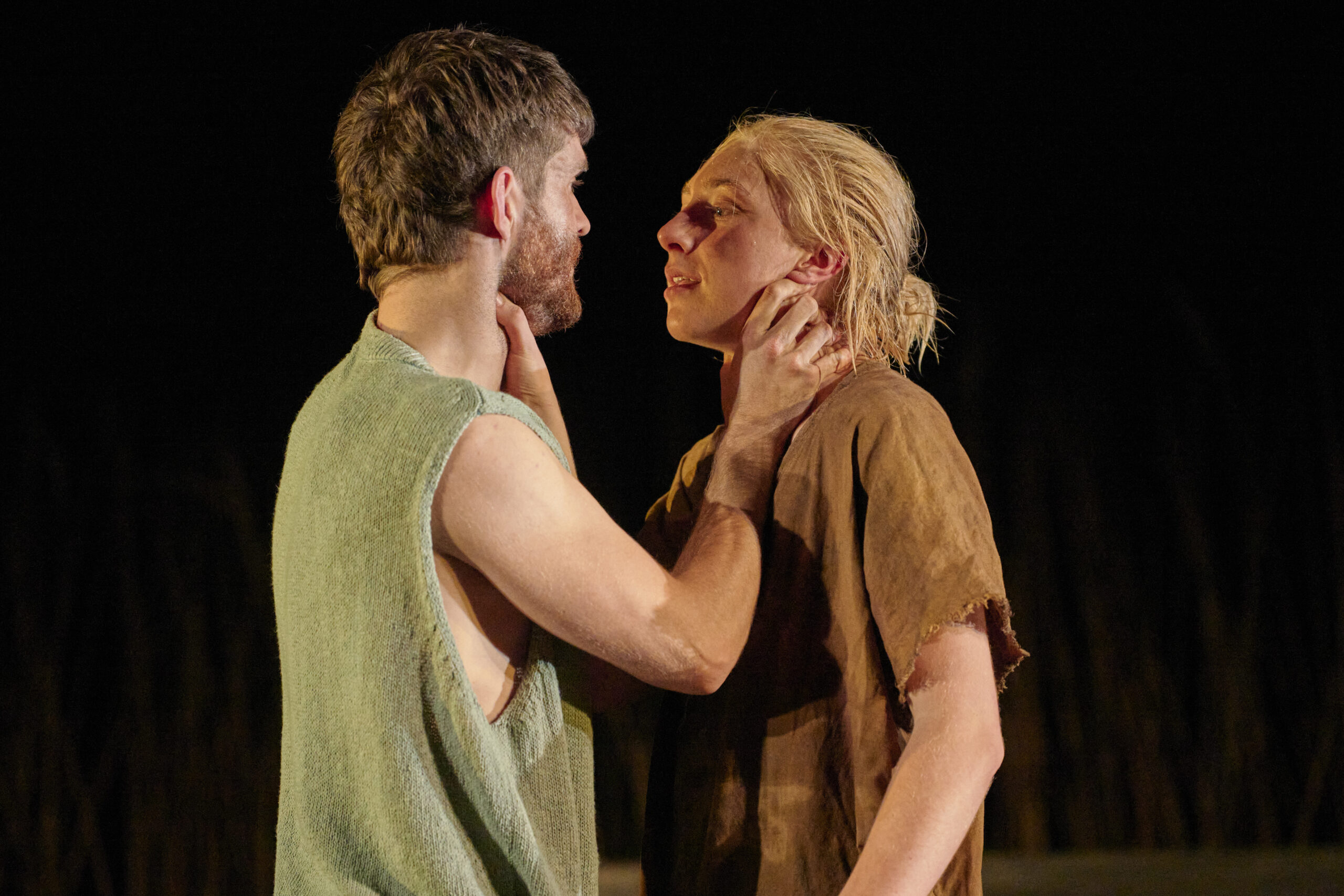
Largely on her own wishes, Lady Gregory’s Grania was never staged by the Abbey Theatre during the writer’s life, the extensive speculation on that fact forms most of the historical perception of the play — was it too personal? Too radical? Not radical enough? But what I found to be historically far more interesting is the difference of the scale and tone of the play when compared to other scripts written at the time — including other adaptations of the story of Grania and Diarmuid like the 1901 co–production of W. B. Yeats and George Moore, based on Lady Gregory’s own version of the folklore tale. In it we would find all the expected elements of a mythical story reinvented for the needs of Yeats’ brand of revivalism — heroic tone, large cast of characters, and a straightforwardly tragic ending. It is then also understandable why Lady Gregory’s own attempt at interpreting the story was seen with some apprehension. It cuts it down, almost without mercy to just the three central characters and reduces the plot to the degree that it becomes more of a suggestion, with characters in a state of constant uncertainty over what their own personalities even are, allowing those to settle only for a moment so the story can be pushed forward and then casting the characters back into immediate doubt. Yeats himself remarked that for a play with just three characters and three full acts, those personages really must have something to talk about — and they do, via what Lady Gregory herself saw as the dramatic core of the story, past its mythological implications and great scale, she highlights the constant push and pull between three figures who can’t decide whether they are guided by love or its jealous shadow.
So with this new staging, the Abbey is faced with a challenge — a never before touched piece of its own golden age, which disagrees aesthetically with most of its period’s commonly understood qualities. What results from the attempt to surmount it is a play defined by a sense of dislocation, internal and external disorientation. The story of Grania and Diarmuid is after all one of exile, one that here seems to be extended in time, space and meaning. The original interpersonal drama of Lady Gregory’s is largely kept intact in this adaptation and added onto with a framing device of another pair of exiled lovers, this time in the modern day, who with song parallel the events of the play or rather bring them forward towards the audience. The ending’s uncertainty leaves it stranded somewhere between mythical past when it’s set, 1912 when it was originally written and 2024 when in this sense of dislocation it manages to find a sense of contemporary value past historical interest and whatever personal themes you’d like to ascribe to it as means of better understanding the figure of Lady Gregory.
This is even more so visible in the physical expansiveness of the staging, which appears minimalistic to the point of abstraction. The original text calls for richly decorated tents, but here the characters are stranded in a land of reeds and suggestions of trees, often even trapped by it, in static blocking and long meandering monologue only to be then suddenly thrust between the sets levels, deeper and deeper, marching, wandering and making you realise that you can’t quite spot the background and have the entire time been staring into an infinity of wind and rain (this depth goes even further with characters descending underneath the stage level, aided by quite impressively done water effects). It’s a constant push and pull of realisations, between personal and global histories, between stasis and action, flatness and depth — contrasting interestingly with the smallness of the actual story, which isn’t changed much from the original text, but set against this great background its dominant sense of uncertainty gains a new dimension.
Critics have been historically reluctant to call Grania a tragedy and understandably so, since it doesn’t go with the easiest folkloric version of the story and turns instead to a more uneven, uncertain vision of the relationship between Finn, Grania and Diarmuid — where it quickly becomes clear that none of them quite know what they’re looking for, and that Grania isn’t really interested in either of her suitors as much as in the idea of being pursued. Against the new background of this staging, those qualities are given the literal space to develop, to get lost in and retain their central uncertainty. It might have been just a byproduct of having seen it in previews, but it appears naturalistically underrehearsed, with characters speaking as if they were unsure of their surroundings, emotions and even lines. The only thing that happens ‘now’ (instead of some dislocated mythologised past) is the observable process of them arriving at their word only through deliberate composition, with the direction lingering of those moments of self-description. This produces a locus for a new reality, at times because the flimsy plot demands coming up with a motivation in the moment, but mostly because of the far more interesting quality of there not being much of a better option, since all that seems to exist in this setting are wandering, lost lovers, never quite sure of their position. In this sense, the response to this new staging won’t be much different than to the original text — it is a play of push and pull, where no one quite comes out on top because there doesn’t seem to be a clear high point to climb up to. It’s all out of location, this time displaced slightly more, by the distance of a hundred years.






